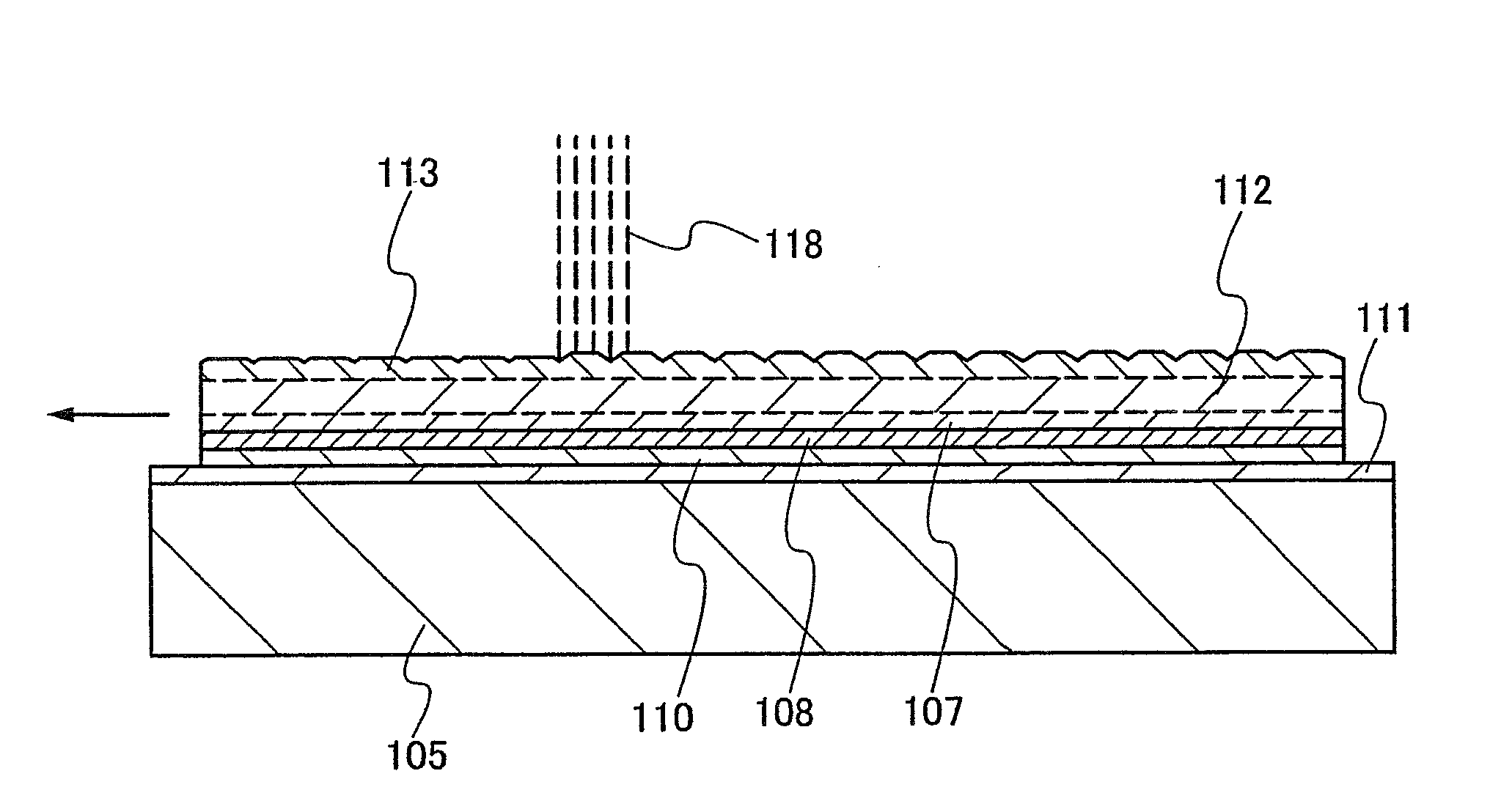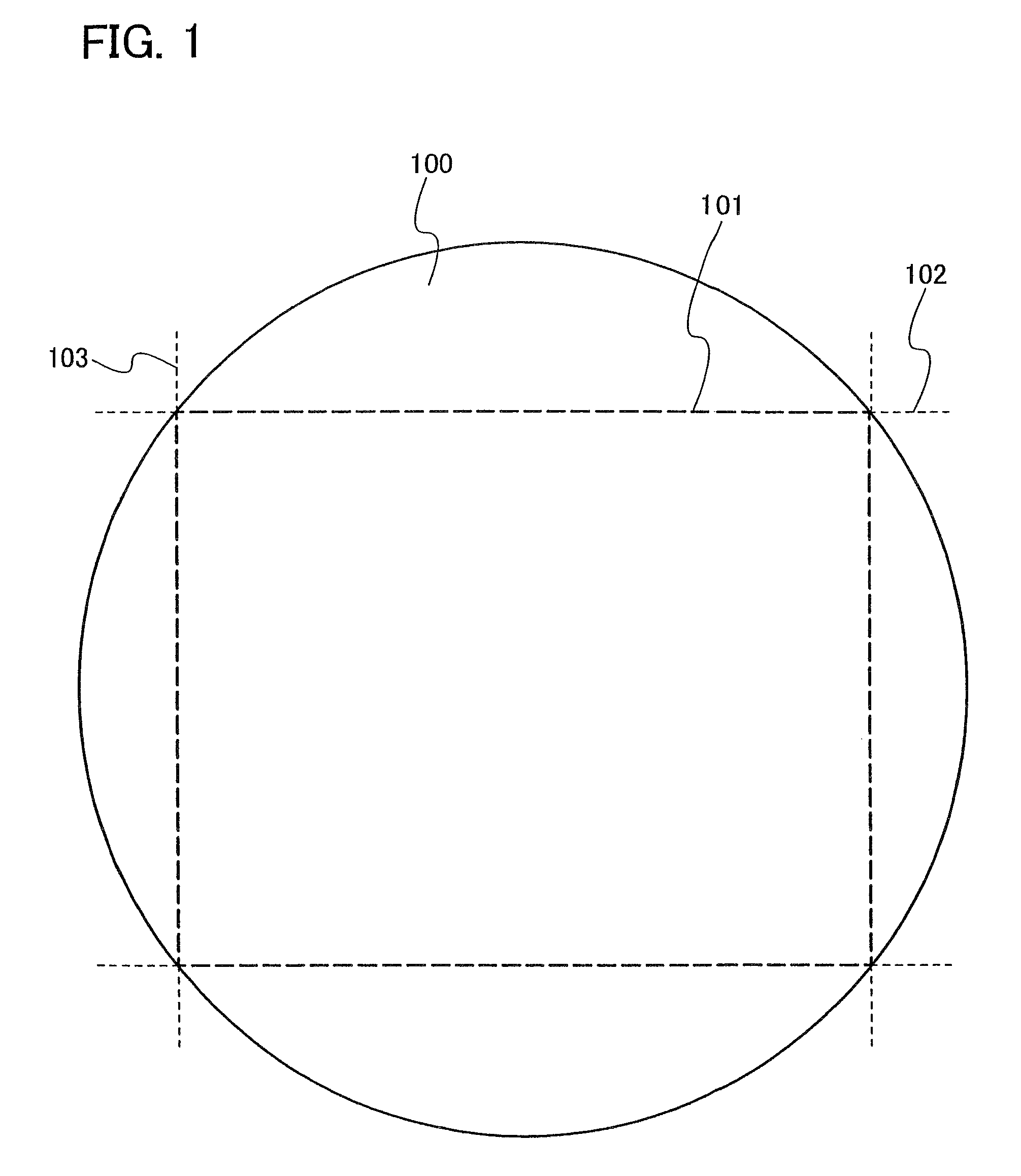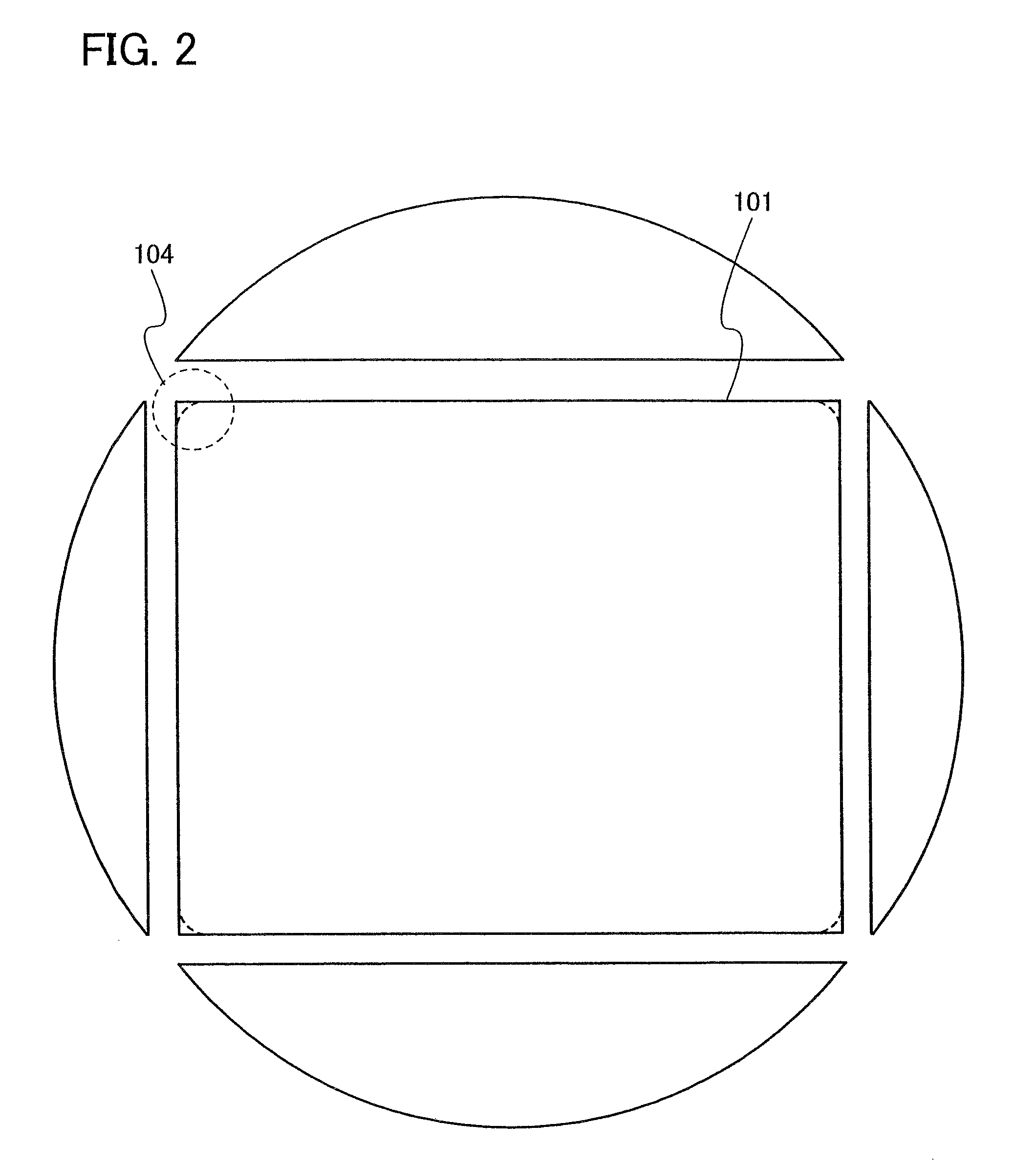Method for manufacturing photoelectric conversion device
a technology of photoelectric conversion and manufacturing method, which is applied in the field of manufacturing a photoelectric conversion device, can solve the problems of low yield of a gas needed for film formation, low productivity, and inferiority of single crystal silicon solar cells in terms of photoelectric conversion characteristics, and achieves excellent photoelectric conversion characteristics and high collection efficiency of photogenerated carriers
- Summary
- Abstract
- Description
- Claims
- Application Information
AI Technical Summary
Benefits of technology
Problems solved by technology
Method used
Image
Examples
embodiment mode 1
[0056]In this embodiment mode, a method for manufacturing a photovoltaic conversion device using a solar cell by separating a thin single crystal semiconductor layer from a single crystal semiconductor substrate and transferring the separated single crystal semiconductor layer to a substrate having an insulating surface or an insulating substrate, will be described with reference to the drawings.
[0057]FIG. 7 is a plan view of a photovoltaic conversion device 10 according to this embodiment mode. This photovoltaic conversion device 10 generates electric power when light is incident on a single crystal semiconductor layer 112 provided over a supporting substrate 105. In the single crystal semiconductor layer 112, an impurity semiconductor layer for forming a built-in electric field is formed. As the single crystal semiconductor layer 112, typically, single crystal silicon is used. Further, a polycrystalline semiconductor layer can be used instead of the single crystal semiconductor la...
embodiment mode 2
[0096]In this embodiment mode, a manufacturing process which is different from that in Embodiment Mode 1 is shown with reference to FIGS. 16A to 16C. As shown in FIG. 16A, the protective film 106 is formed over the semiconductor substrate 101 for transfer, an impurity imparting one conductivity type is added through the protective film 106 to form the first impurity semiconductor layer 107, and then, cluster ions of hydrogen are introduced with the protective film 106 left so as to form the damaged layer 109. Thereafter, as shown in FIG. 16C, the protective film 106 is removed and the first electrode 108 is formed.
[0097]By the above-described process, the protective film 106 can be effectively utilized as an anti-damage layer in ion doping. That is, by removing the protective film 106 that is damaged due to ion irradiation before forming the first electrode 108, the surface of the semiconductor substrate 101 for transfer can be prevented from being damaged. Moreover, cluster ions of...
embodiment mode 3
[0098]In this embodiment mode, a manufacturing process which is different from that in Embodiment Mode 1 is shown with reference to FIGS. 17A to 17C. As shown in FIG. 17A, the first electrode 108 is formed over the semiconductor substrate 101 for transfer, and as shown in FIG. 17B, an impurity imparting one conductivity type is added through the first electrode 108 so as to form the first semiconductor layer 107. Then, as shown in FIG. 17C, cluster ions of hydrogen are introduced through the first electrode 108 and the first impurity semiconductor layer 107 to form the damaged layer 109.
[0099]In this process, the first impurity semiconductor layer 107 is formed through the first electrode 108; thus the thickness of the first impurity semiconductor layer 107 can be controlled easily. Furthermore, the damaged layer 109 is formed after forming the first electrode 108; therefore, the first electrode 108 can be used as an anti-damage layer in ion doping. Accordingly, a step of forming a ...
PUM
 Login to View More
Login to View More Abstract
Description
Claims
Application Information
 Login to View More
Login to View More - R&D
- Intellectual Property
- Life Sciences
- Materials
- Tech Scout
- Unparalleled Data Quality
- Higher Quality Content
- 60% Fewer Hallucinations
Browse by: Latest US Patents, China's latest patents, Technical Efficacy Thesaurus, Application Domain, Technology Topic, Popular Technical Reports.
© 2025 PatSnap. All rights reserved.Legal|Privacy policy|Modern Slavery Act Transparency Statement|Sitemap|About US| Contact US: help@patsnap.com



